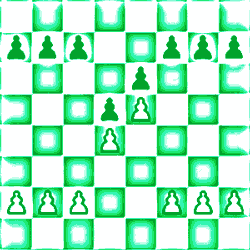French Defence Special
by Vidya
(India)
French Defense is a type of chess opening that can be identified by the move 1.e4 e6 and usually continues 2.d4 d5. Here White expands claim on the centre at the same time, black challenges the pawn on e4. In this chess opening, white has a number of options like Nc3, Nd2 and exchange with exd5 or advance the pawn with e5.
In 1834, during the correspondence chess match between the cities of London and Paris, the term, French Defense was initially used. In this match, the Parisians won. Chamouillet, one of the players in the Paris team, was the player who convinced people on the use of this chess opening. During the 19th century, this opening had not been so popular but later it achieved a lot of popularity and many famous world champions used this as a strong weapon.
One of the world’s finest chess players, Géza Maróczy had used this defense as his primary weapon. Mikhail Botvinnik, Viktor Korchnoi, Aron Nimzowitsch, Tigran Petrosian, Lev Psakhis, Wolfgang Uhlmann and Rafael Vaganian are the main contributors of French Defence opening. Evgeny Bareev, Alexey Dreev, Mikhail Gurevich, Alexander Khalifman, Smbat Lputian, Alexander Morozevich, Teimour Radjabov, Nigel Short, Gata Kamsky, and Yury Shulman are recent practitioners of French Defense.
The strength of French Defence is its solid nature. This helped any player to survive at the middle of the match by giving some fighting chances. It is a unique opening for defensive-minded players. One beautiful example of the French Defense in action can be seen in the game between James McConnell and Paul Morphy in New Orleans 1850. Morphy was just 13 when the game was played. It went as follows:
1. e4 e6 2.d4 d5
Black goes with the French Defense.
3.e5 c5
The text move is almost obliged as Black seeks to undermine the base of the White pawn chain.
4.c3 Nc6
Two attackers on d4.
5.f4
White wants to get at the Black pawn chain with an eventual f5.
5...Qb6
A third attacker.
6.Nf3
White balances the pressure but Black's attacking pieces will be able to take up active posts and force the defenders to take up awkward positions.
6...Bd7 7.a3 Nh6
7...Ne7 was also good. The idea is to reach f5 and pile yet more pressure on d4. In order to maintain adequate defense of the pawn, White will be forced into further positional compromises.
8.b4
Attempting to deflect the primary attacker.
cxd4 9.cxd4 Rc8
The exchange hands the c-file to Black.
10.Bb2 Nf5
The replacement at d4 is now feeling the heat as three well placed attackers tie down three unfortunately placed defenders.
11.Qd3 Bxb4+!
The sacrifice of the bishop will break White's resistance as Black will finish with a crisp combination.
12.axb4 Nxb4
Attacking the queen, opening up the file for the rook and winning control of c2 with tempo.
13.Qd2 Rc2
Queen has nowhere to go but return home. The rook's successful invasion of the seventh rank spells the end.
14.Qd1 Ne3
Winning the queen with further material losses in the pipeline. White resigns.
0–1
Play through the moves of yet another example of Morphy's effortless brilliance.









